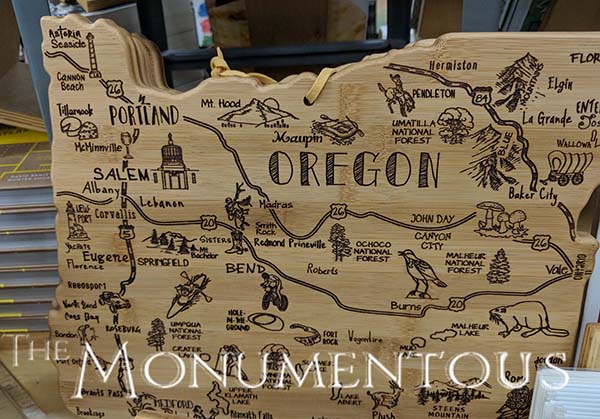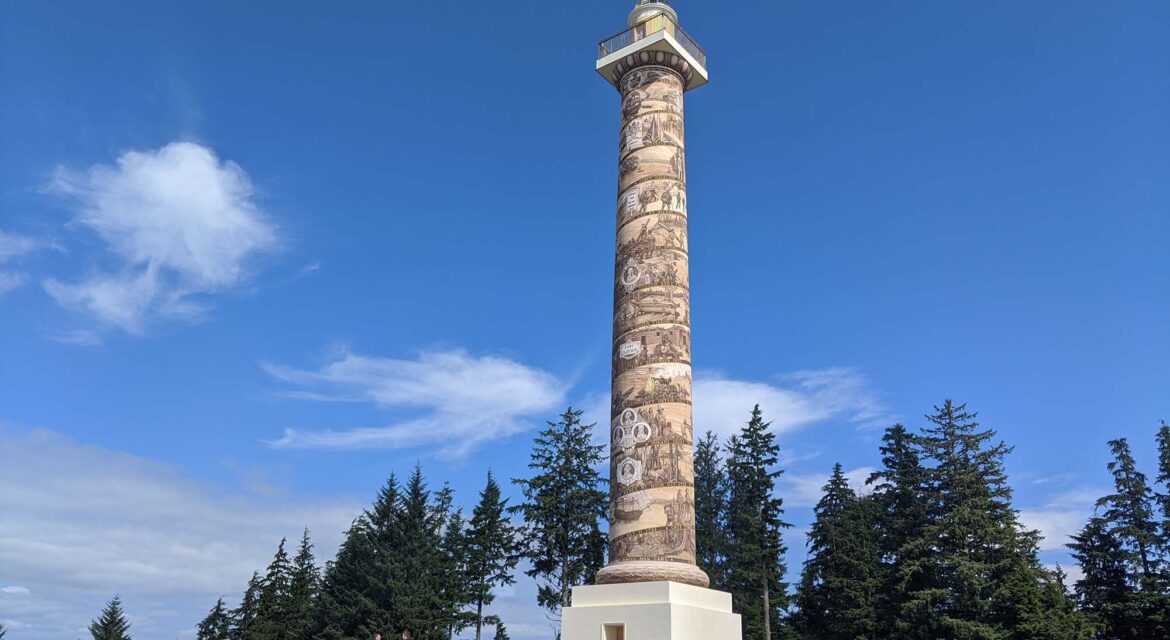 Astoria, Oregon is known as both a gateway and hub to residents and visitors. That reputation has given further prominence to the Astoria Column, which embraces the history of the area while also providing numerous experiences that attract audiences of all types. This combination has enabled it to become a landmark that has come to define a legacy for the entire region.
Astoria, Oregon is known as both a gateway and hub to residents and visitors. That reputation has given further prominence to the Astoria Column, which embraces the history of the area while also providing numerous experiences that attract audiences of all types. This combination has enabled it to become a landmark that has come to define a legacy for the entire region.

Celebrating the Discovery and Settlement of the West
 The Astoria Column was built in 1926 to celebrate the discovery, exploration, and settlement of the West. Commissioned by the then-president of the Great Northern Railroad, the landmark was inspired by Trajan’s Column in Rome and the Vendome Column in Paris. The structure is made of concrete and rises 125-feet into the sky.
The Astoria Column was built in 1926 to celebrate the discovery, exploration, and settlement of the West. Commissioned by the then-president of the Great Northern Railroad, the landmark was inspired by Trajan’s Column in Rome and the Vendome Column in Paris. The structure is made of concrete and rises 125-feet into the sky.
The murals on the column trace the development of the region from it’s origins to the arrival of the railroad in 1893. Scenes depict the time before white people arrived, Fort Clatsop being built, the Transfer of Astoria to the Northwest Company, the arrival of the railroad to Astoria and much more. The murals that make up the column were refurbished in 1995 and a granite plaza was added in 2004. In 2015, a $1 million restoration took place to keep the Column’s artwork beautiful, the grounds cared for and the structure safe.
The plaza has enabled a major economic impact for the Astoria Column, as it has driven numerous sponsorships. At the top sponsorship level, supports can engrave their name or the name of a loved one on a large granite marker surrounding the base of the Astoria Column. Other levels allow supporters to put their names on steps and the promenade.
Added to the National Register of Historic Places in 1974, the Astoria Column has been able to generate an incredible amount of interest and activity for the entire region, highlighting what it can for a landmark to create benefits for stakeholders and to entire communities.

Experiences, Community Connection and Commerce
 The Astoria Column features an interior spiral staircase that leads to an observation deck at the top, providing an incredible look at the surrounding area. At night, the Astoria Column is lit up with a magnificent light show every hour on the hour.
The Astoria Column features an interior spiral staircase that leads to an observation deck at the top, providing an incredible look at the surrounding area. At night, the Astoria Column is lit up with a magnificent light show every hour on the hour.
Visiting the park or climbing the Column is free. Parking is $5 per vehicle, which is good for one year. As another means of direct revenue, a gift shop located very near the Astoria Column features numerous items for sale that are only available at the location. Gifts range from gliders to mugs to shirts to various other souvenirs, some of which can be purchased online.
The Astoria Column has also been able to provide further prominence to other landmarks and features of the area. A memorial to Chinook nation Chief Comcomly is found near the Astoria Column. It consists of a replica of Chief Comcomly’s burial canoe, which is elevated and facing west as prescribed by Chinook custom. The site also provides easy access to the Richard Fencsak Cathedral Tree Trail.
 A staple of the community and icon of the city, the Astoria Column has become a landmark that attracts the attention of both residents and visitors across the region. Doing so has cultivated a legacy that will continue to positively influence audiences and stakeholders across the eras.
A staple of the community and icon of the city, the Astoria Column has become a landmark that attracts the attention of both residents and visitors across the region. Doing so has cultivated a legacy that will continue to positively influence audiences and stakeholders across the eras.

History and Experiences Define a Legacy
 Serving as one of the most prominent tributes in America to those who built the West, the Astoria Column is a commanding landmark that has a direct connection to the history of the region and nation. This significance has enabled it to cultivate a legacy that is as much about the history of the area as it is the experiences of visitors in the present. It highlights what it can mean for a monument to bridge multiple eras while serving as an attraction that can be utilized in positive ways.
Serving as one of the most prominent tributes in America to those who built the West, the Astoria Column is a commanding landmark that has a direct connection to the history of the region and nation. This significance has enabled it to cultivate a legacy that is as much about the history of the area as it is the experiences of visitors in the present. It highlights what it can mean for a monument to bridge multiple eras while serving as an attraction that can be utilized in positive ways.

